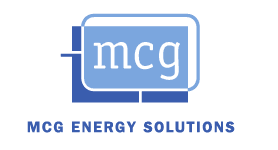Distributed Energy Resources, or DERs, are small-scaled power centers that either generate or store power that ranges from 1 kW to 10,000 kW. Typically DERs often refer to small energy generation units that are on the customer side of the meter, but what exactly does that mean?
Examples of Distributed Energy Resources
Since DERs are small-scaled energy centers, the most common DERs would include:
- solar panels
- small-scaled wind farms
- electric vehicles and their charging equipment
- diesel or natural gas generators
If a customer has a DER installed, it will help them reduce the price they pay on electricity with improved reliability.
Different Distributed Energy Resource Size Classifications
DERs have different size classifications; Micro, Mini, Small, Medium and Large. A Micro DER would be something like a rooftop solar photovoltaic unit, while an example of a Large DER would be a wind farm. One thing that is important to note about DERs is that the energy that is generated or stored by a DER is used close to the source of it.
DERs can range from solar panels to wind farms. As long as they can generate or store at least 1 kW of power and no more than 10,000 kW, it is deemed as a Distributed Energy Resource. So, what are some other examples of a Distributed Energy Resource? Electric storage, battery storage, thermal storage, wind generating units, HVAC systems, electric water heaters, biomass generators, and more.
What Does Distributed Energy Resource Mean in a Utility?
The average U.S home uses about 900 kW of energy per month, and a large house in a hot climate that uses a lot of energy on air conditioning would be closer to 2,000 kW each month. Supplementing your energy usage with a DER can often provide monetary savings and additional reliability.
Savings 💵 |
Reliability 🔋 |
| The power generated or stored in a DER is typically used close to the source. Excluding the initial investment in implementing a DER, a DER user tends to spend less money on their monthly energy utilities. | A DER provides additional insurance if your power company has an outage. Your DER should be able to provide reliable power until the situation is resolved so you are unaffected by the lack of energy from your utility company. |
Are Distributed Energy Resources Renewable Energy Efficient?
DERs are renewable energy efficient. Right now, we are at an all-time high of energy consumption and increased demands to outdated grids are causing issues. Having a DER allows you to circumvent the issue totally.
Since you would not be totally reliant on the power company’s grid, issues with outages, shortages, rolling blackouts, and price spikes, you can have peace of mind that your DER will be available.
Why is DER important?
DERs are physical and virtual assets that are deployed across the distribution grid, typically close to load, and usually behind the meter, which can be used individually or in aggregate to provide value to the grid, individual customers, or both.
What Is DER Software?
Distributed Energy Resources (DER) software applications enables network modeling that reflects the evolving distribution system including distributed generation and storage units as well as the data produced by intelligent devices such as smart meters and sensors.
How MCG Energy’s IAM Software Is a DER Solution
The MCG Energy Integrated Asset Management (IAM) software helps the end-user administer their DER energy.
Contact the MCG Energy Sales Team for more information. Learn how our IAM energy software suite is the solution to your Distributed Energy Resources issues.

David Peterson, Ph.D. is the content specialist for MCG Energy Solutions.
